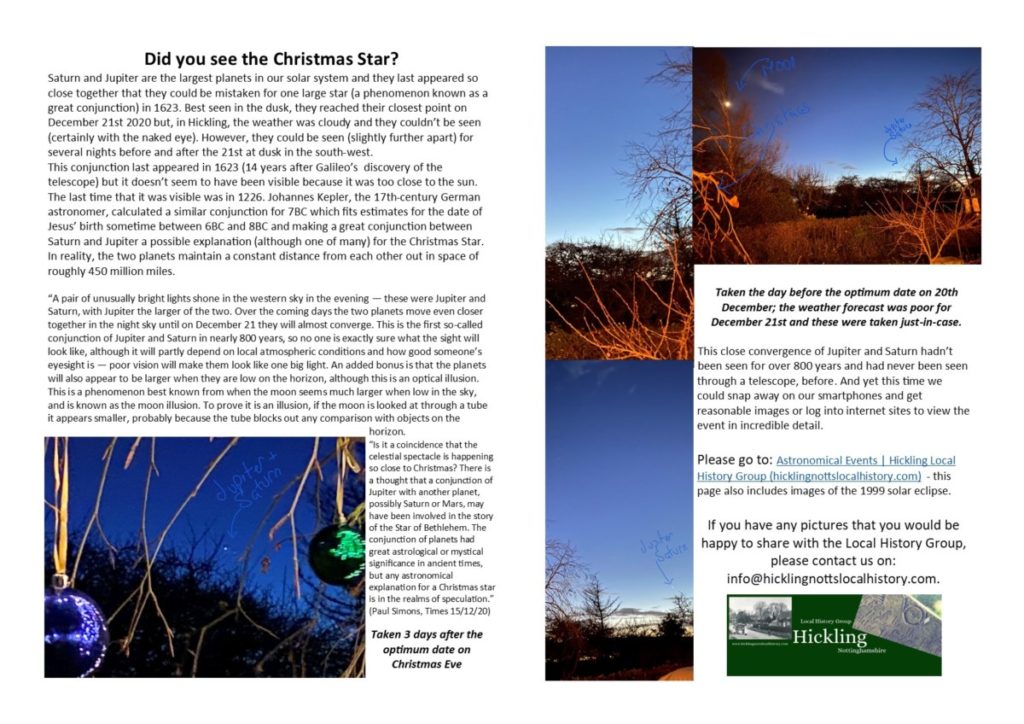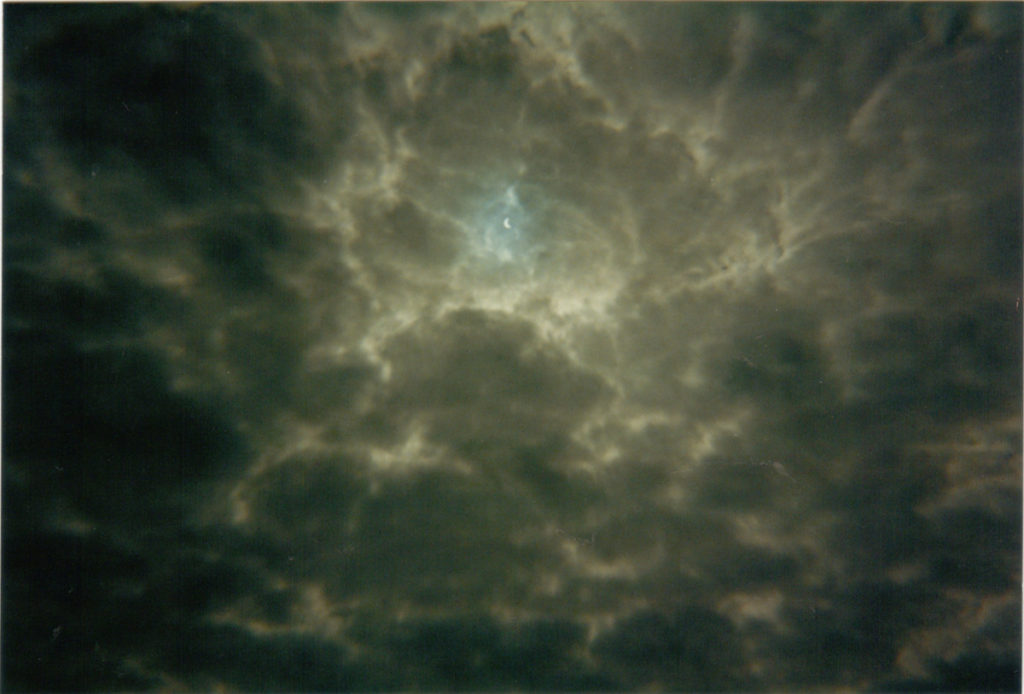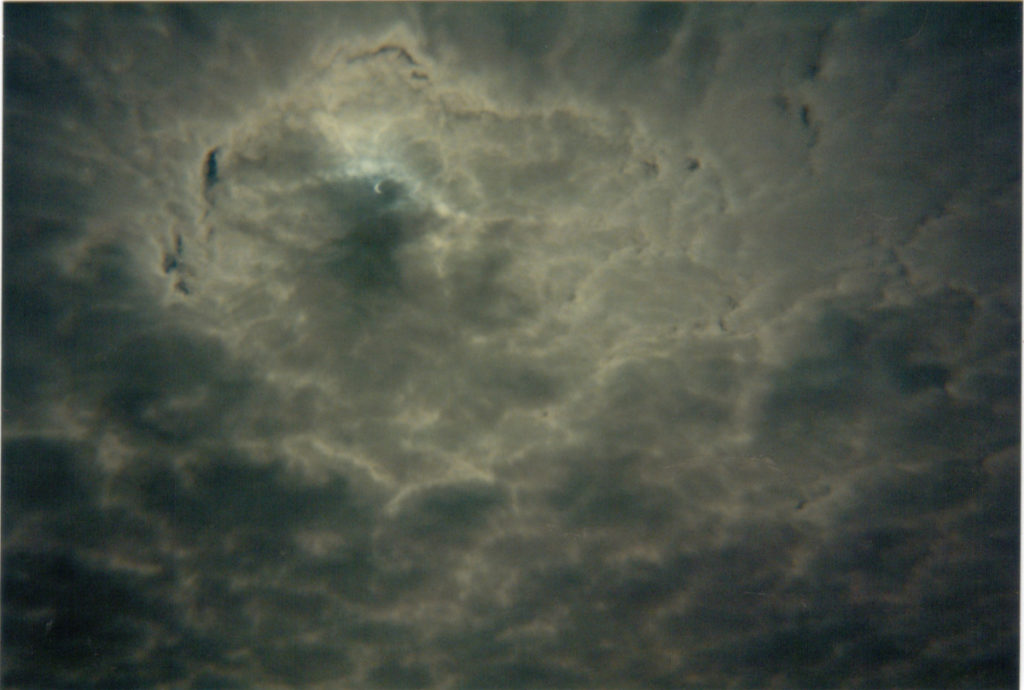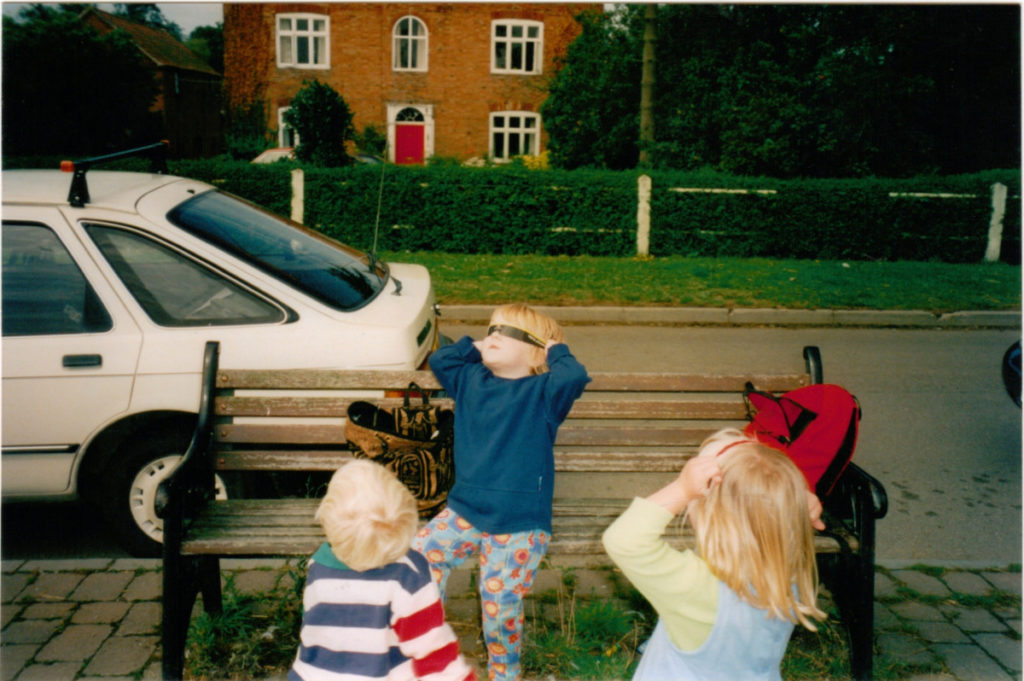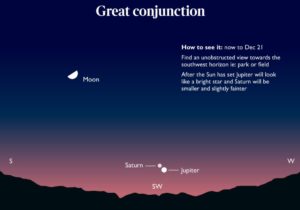Solar Eclipse: August 11th 1999
The last major solar eclipse happened on August 11th 1999. It was the first total eclipse since 1990 and the first seen in the UK since 1927. The next one visible in our area won’t be for another 27 years from 1999: “The partial solar eclipse of 29 March 2025 will give the UK an eclipse of between 40% in the south-east, and 60% in the north-west. The total solar eclipse of 12 August 2026 will plunge the entire UK into deep eclipse, of 90% or more, close to sunset.” (Moonblink.com) The UK’s next total solar eclipse won’t happen until September 23rd 2090 but, again, it will be most visible in Cornwall and will occur very close to sunset.
In 1999, total eclipse was only achieved in Cornwall, although visibility wasn’t great when the time came. In Hickling, we weren’t submerged into complete darkness but the changes were distinct and very unsettling. The dangers of looking straight at the sun, even in eclipse, meant we were all wearing very strange glasses with proper UV protection (sunglasses weren’t sufficient) and using disposable cameras.
In folklore, an eclipse is unsettling – a sense of time and the natural order being out-of-joint. In a pre-Copernicus/Galileo world the slow swallowing of the sun or the moon with the strange changes in light and atmosphere that go with an eclipse must have been genuinely frightening – indeed, the earliest word for eclipse in Chinese, shih, means “to eat,“. For some it was a sign of great change and often an omen for disaster. Ancient civilisations all over the world had myths referring to the sun being eaten or devoured by hostile beings – dragons, dogs, wolves, big cats. But the sun and the moon are also seen as eternal partners which led to eclipse folklore based on their coming together or the dominance of one partner over the other.
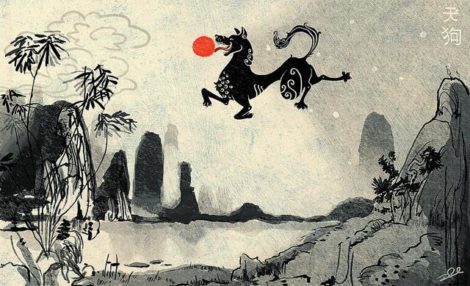
“The Vikings saw a pair of sky wolves chasing the sun or the moon,” (…) When one of the wolves caught either of the shining orbs, an eclipse would result.
One of the more colourful stories involves the Hindu demon Rahu, who disguises himself as a god in order to steal a taste of an elixir that grants immortality. The sun and moon see what Rahu is up to, and they report his crime to the god Vishnu. “Vishnu slices off his head before [the elixr] can slide past his throat,” said Krupp. As a consequence, Rahu’s head turns immortal, but his body dies. The demon’s head continues to move through the sky, chasing the sun and the moon out of hatred. “Every now and then he catches them and swallows them,” explained Krupp. But since Rahu has no throat, the sun and the moon fall out of the bottom of his head.
“My favorite myth is from the Batammaliba people in Togo and Benin” in Africa, said Holbrook. In this myth, the sun and the moon are fighting during an eclipse, she said. The people “encourage the sun and the moon to stop fighting.” “They see it as a time of coming together and resolving old feuds and anger,” Holbrook said. “It’s a myth that has held to this day.”
The Navajo regard the cosmic order of the universe as being all about balance, she said. “Something like an eclipse is just part of nature’s law. You pause to acknowledge that that time is special, [and] you reflect on the cosmic order.”
(Jane Lee, National Geographic 2013)
Convergence of Jupiter and Saturn: December 2020 (The Christmas Star).
This close convergence of Jupiter and Saturn hadn’t been seen for over 800 years and had never been seen through a telescope, before. And yet this time we could snap away on our smartphones and get reasonable images or log into internet sites to view the event in incredible detail.
Saturn and Jupiter are the largest planets in our solar system and they last appeared so close together that they could be mistaken for one large star (a phenomenon known as a great conjunction) in 1623. Best seen in the dusk, they reached their closest point on December 21st 2020 but, in Hickling, the weather was cloudy and they couldn’t be seen (certainly with the naked eye). However, they could be seen (slightly further apart) for several nights before and after the 21st at dusk in the south-west.
This conjunction last appeared in 1623 (14 years after Galileo’s discovery of the telescope) but it doesn’t seem to have been visible because it was too close to the sun. The last time that it was visible was in 1226. Johannes Kepler, the 17th-century German astronomer, calculated a similar conjunction for 7BC which fits estimates for the date of Jesus’ birth sometime between 6BC and 8BC and making a great conjunction between Saturn and Jupiter a possible explanation (although one of many) for the Christmas Star.
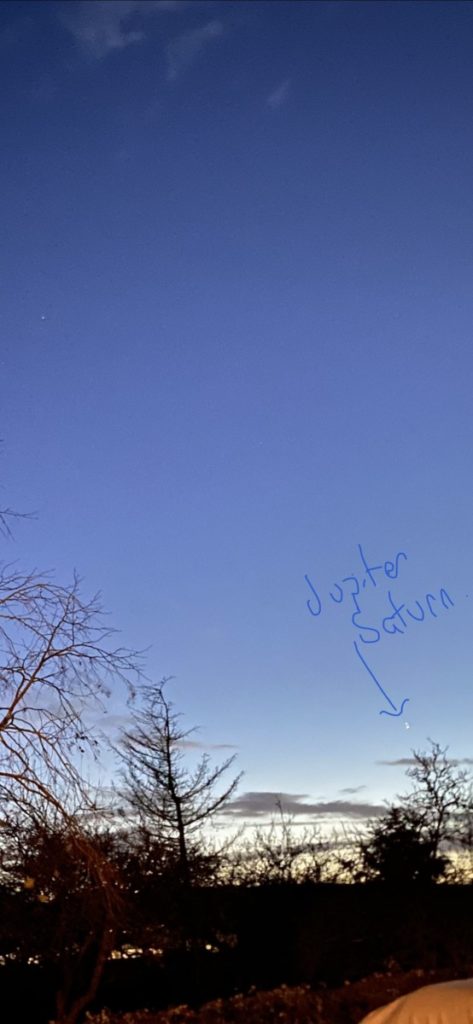
In reality, the two planets maintain a constant distance from each other out in space of roughly 450 million miles.
“A pair of unusually bright lights shone in the western sky in the evening — these were Jupiter and Saturn, with Jupiter the larger of the two. Over the coming days the two planets move even closer together in the night sky until on December 21 they will almost converge. This is the first so-called conjunction of Jupiter and Saturn in nearly 800 years, so no one is exactly sure what the sight will look like, although it will partly depend on local atmospheric conditions and how good someone’s eyesight is — poor vision will make them look like one big light. An added bonus is that the planets will also appear to be larger when they are low on the horizon, although this is an optical illusion. This is a phenomenon best known from when the moon seems much larger when low in the sky, and is known as the moon illusion. To prove it is an illusion, if the moon is looked at through a tube it appears smaller, probably because the tube blocks out any comparison with objects on the horizon.
“Is it a coincidence that the celestial spectacle is happening so close to Christmas? There is a thought that a conjunction of Jupiter with another planet, possibly Saturn or Mars, may have been involved in the story of the Star of Bethlehem. The conjunction of planets had great astrological or mystical significance in ancient times, but any astronomical explanation for a Christmas star is in the realms of speculation.”
(Paul Simons, Times 15/12/20)






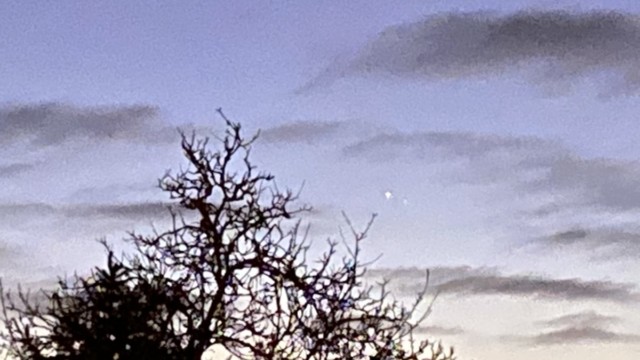





- Please contact us if you have photos of this event taken from Hickling – thank you!
- Jupiter and Saturn: Heavenly sight to appear for first time since 1623 (Times 19th Dec 2020)
- December night sky: Is planet conjunction the true star? (Times 1st December 2020)
- Jupiter and Saturn produce a sight not seen for nearly 800 years (Times 15th December 2020)
- Hickling Standard Feb/March 2021.
